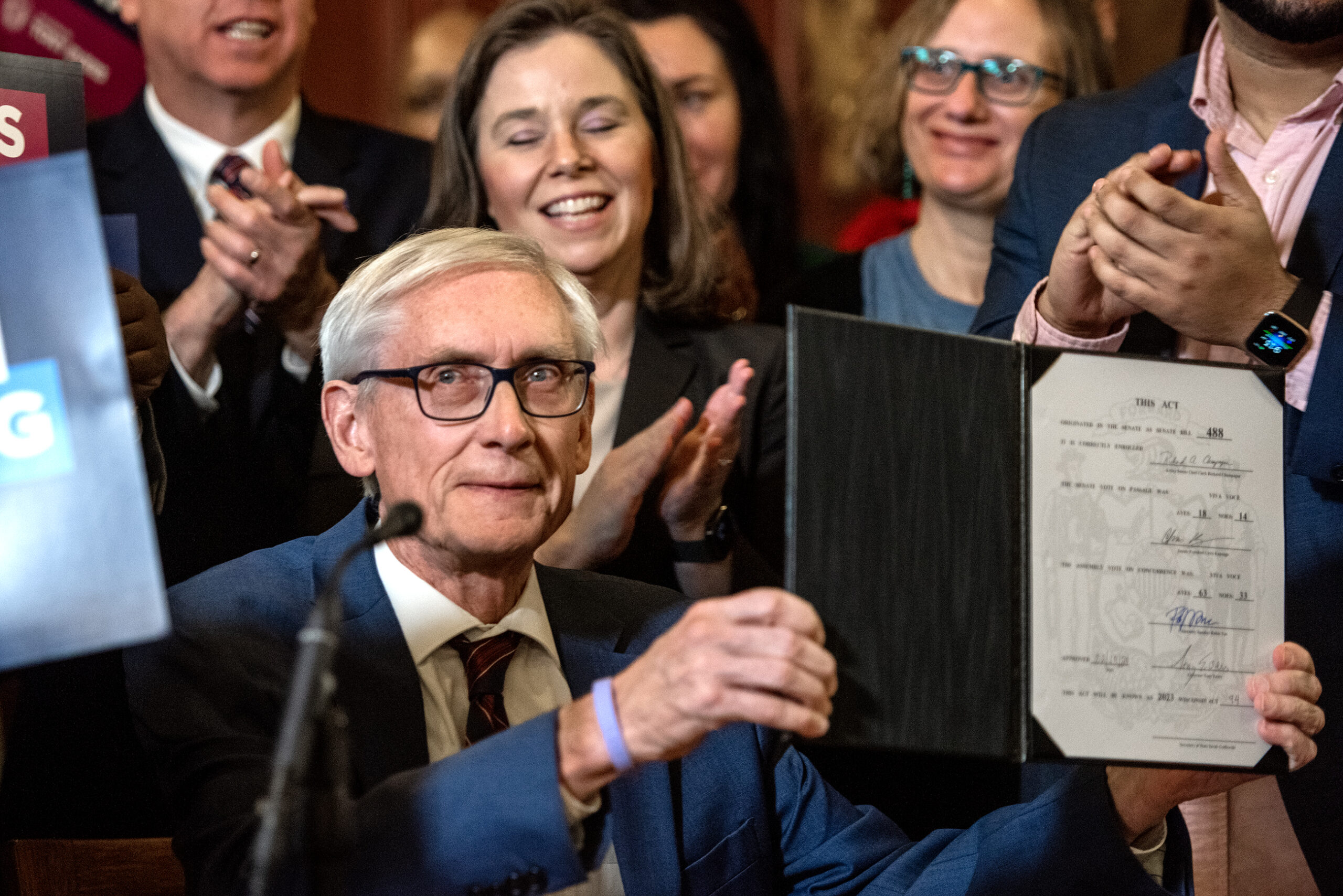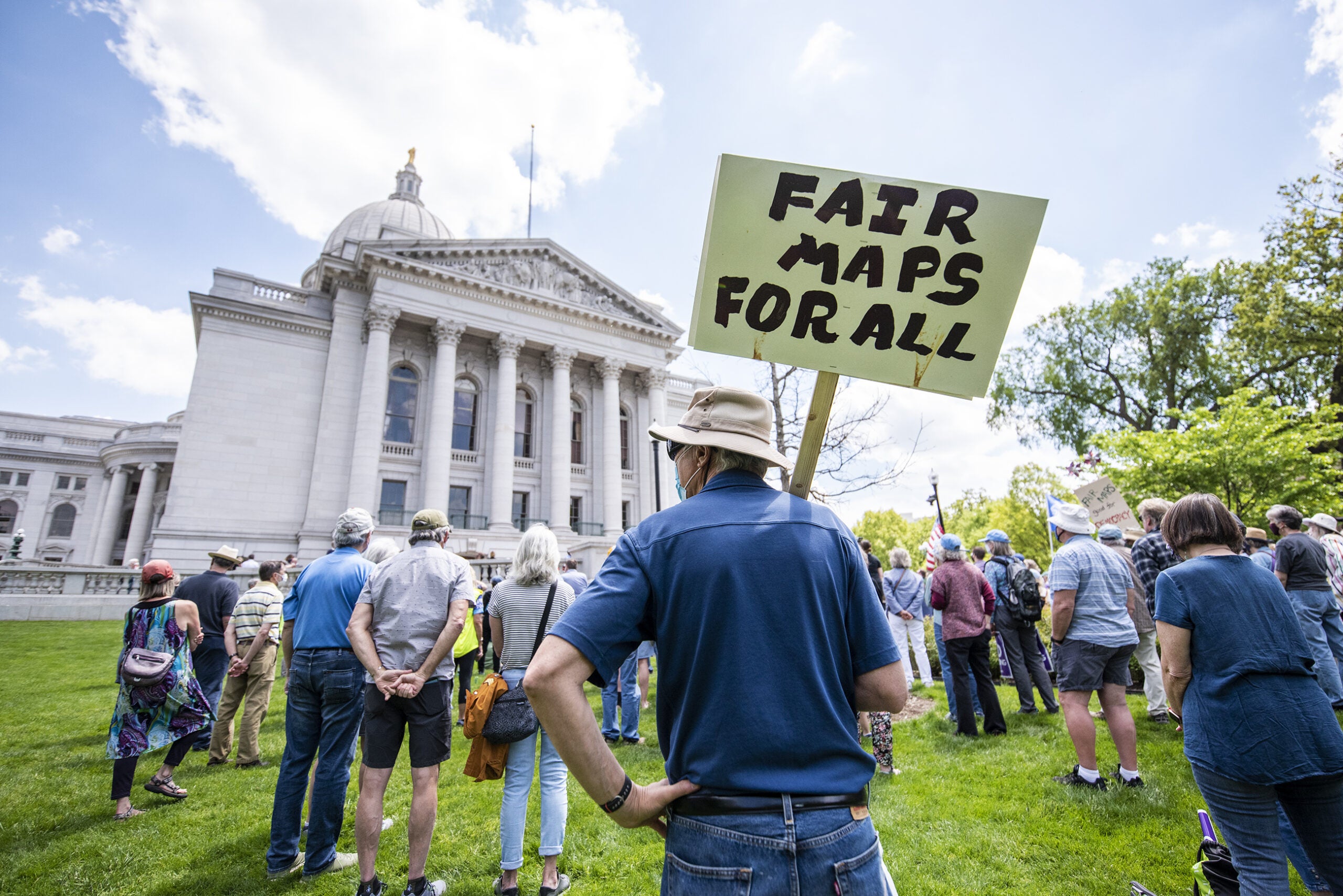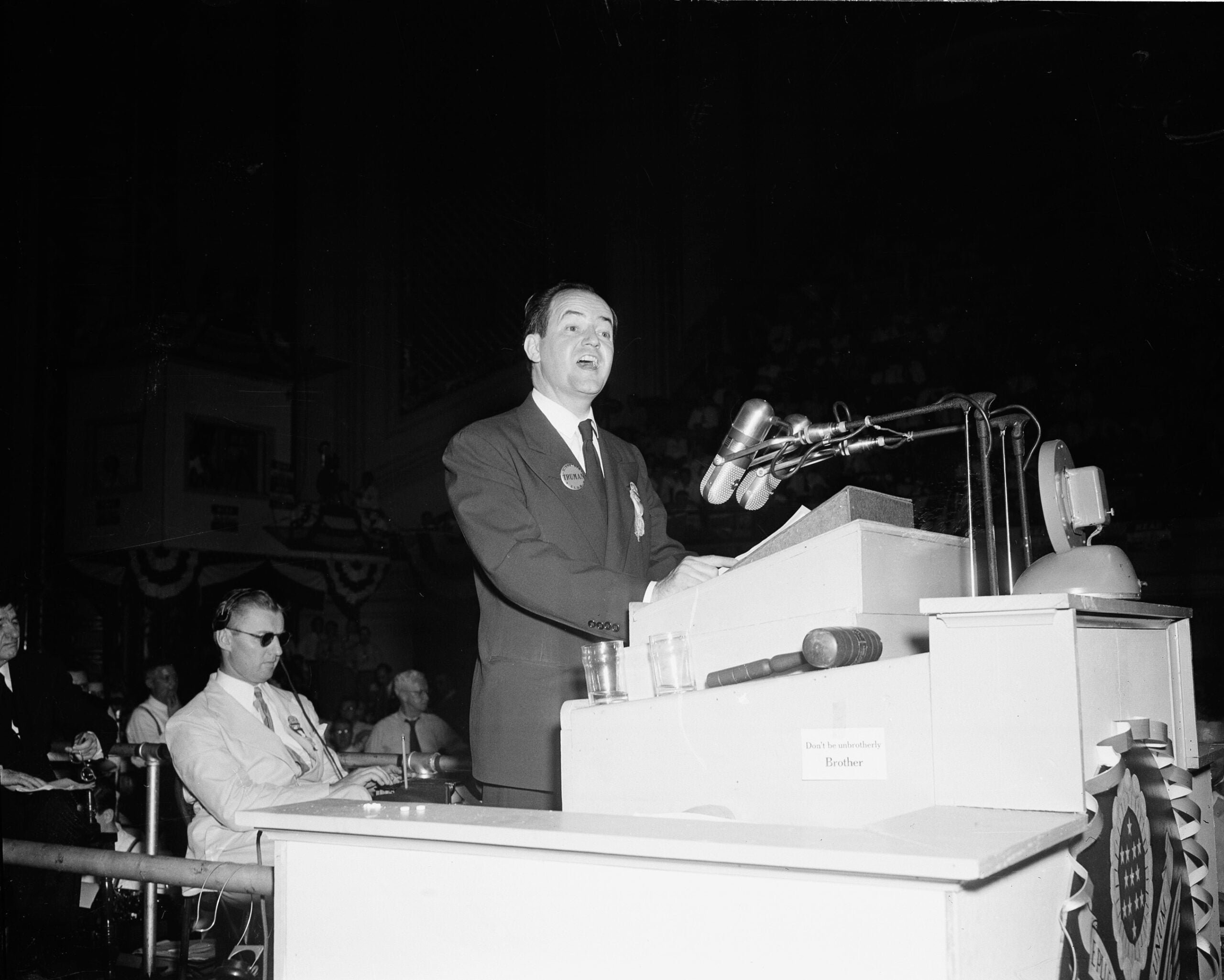For almost a year, the U.S. Supreme Court has had just eight members. Our guest legal scholar argues it should stay that way. He offers a new model for the court that would require more compromise and be less subject to political ideology. We also get a local take on last weekend’s demonstration by abortion rights opponents in Washington D.C. And a new grant received by the Wisconsin Historical Society will help research and preserve sites in Milwaukee that have been significant to the African-American community. We’re joined by a state preservation officer to discuss the project, which is part of a national effort to tell the stories of underrepresented groups.
Featured in this Show
-
Wisconsinites Attend March For Life In Washington
The 44th annual March for Life took place in Washington D.C. on Friday, and many from across the nation…including Wisconsin…made the trip to attend. We hear from a guest from Pro-Life Wisconsin who attended about the event, and the future of the pro-life movement in Wisconsin and beyond.
-
New Grant Will Help Preserve African-American History In Wisconsin
Wisconsin is part of a nationwide effort to preserve the stories of groups that have been overlooked in written history. At the heart of the state’s efforts to preserve underrepresented parts of its own history is the city of Milwaukee.
With a grant from the United States Department of the Interior, the Wisconsin Historical Society will be researching sites that are significant to Milwaukee’s African-American community.
“It’s an attempt to recognize properties that tell broad stories of the country. The sweeping stories that define who Americans are, and by extension, who people in Wisconsin are,” said Jim Draeger, the state historic preservation officer for the Wisconsin Historical Society.
The state’s most populous city along Lake Michigan seemed like a logical place to start. Milwaukee has always had the largest African-American community in the state, Draeger said.
“In the 1930s, about 70 percent of African-Americans in the state lived in Milwaukee,” he said.
Draeger talked about properties associated with the institutional life of the city. Some of the major sites for research he mentioned were African-American fraternal halls, the NAACP’s youth council, and properties associated with artists and cultural icons.
One of those places was Casablanca Hotel. A boarding house Draeger said musicians such as Louis Armstrong and Cab Calloway stayed at during a time when segregation wouldn’t have allowed African-Americans to stay at most hotels.
“When they traveled, they were often discriminated against, in terms of restaurants and lodging spaces,” Draeger said. “And they even published separate guides called ‘green guides’ for traveling African-Americans so they knew where it was safe to go and where it was safe to eat.”
But it’s not always easy to study life in communities that were often excluded from history books.
“Frankly, over the years, (history) has done a pretty lousy job of telling the stories of people who are more often disenfranchised,” he said.
That doesn’t mean there are no records at all, though. Draeger talked about looking to records kept by the NAACP, oral history and newspapers that occasionally covered life in African-American communities.
With the $26,000 grant awarded to the Wisconsin Historical Society, Draeger plans on looking further into the lives of people like the Adam and Anna Dietz, who owned Casablanca Hotel.
“All communities help build Wisconsin culture, and that needs to be recognized if we’re talking about preserving the things that are meaningful that tell us how we got to where we are and why things are the way they are,” he said.
-
New Grant Will Help Research Milwaukee's Historic African-American Sites
The Wisconsin Historical Society recently received a grant to research sites in Milwaukee that have been significant to the city’s African-American community. It’s part of a national effort by the Department of the Interior to tell the stories of underrepresented groups by including more of their important spaces on the National Register of Historic Places. Wisconsin’s state historical preservation officer joins us to share more about the project.
-
Legal Scholar Says Supreme Court Should Move Towards Permanent Eight Justice Model
Since the death of Supreme Court Justice Antonin Scalia almost one year ago, there have been only eight justices on the bench of the nation’s highest court. Our guest says…maybe it should stay that way. He argues for a permanent eight-justice model for the Supreme Court, with four democrats and four republicans, which he says would cause the court to work harder to reach consensus on difficult cases, and would be less subject to political ideologies.
-
Ahead Of Trump’s SCOTUS Announcement, A Legal Scholar Makes A Case For 8 Justices
In the lead up to November’s election, the vacancy on the United States’ highest court was discussed frequently. During the campaign, then-candidate Donald Trump released a list of 21 judges he said he would consider if he was elected to replace late Justice Antonin Scalia, the famously conservative justice who died last February.
Now, President Trump has reached a decision, and has said he will announce his pick for the Supreme Court at 7 p.m. Tuesday from the White House.
Since former President Barack Obama’s nominee to fill Scalia’s seat, Judge Merrick Garland, was not given a hearing by Congress, the court has been operating with eight justices for almost a year. One legal scholar says eight justices is enough, and it should remain that way permanently.
Eric Segall, a professor at Georgia State University’s College of Law, recently published a paper titled, “Eight Justices are Enough: A Proposal to Improve the United States Supreme Court.”
Segall said his proposal only works if the court has four Republicans and four Democrats – similar to the makeup of the Federal Election Commission, which by law has an even number of presidential-appointees from both parties.
Under this proposal, Segall said he believes the Supreme Court would be forced to make more compromises and bipartisan decisions.
“With an even number of Democrats and Republicans on the court then the justices have to have more narrow decisions, more bipartisan decision making in the cases that divide the court,” he said. “In a tie, the justices would have to (do) something because they wouldn’t want to lose their power over time.
“No governmental official, no matter how well intentioned, wants to lose their power over time,” he said. “So what they would do is make narrower decisions, more incremental decision making, and I think that would be a good thing.”
If the court were to vote along ideological lines, which would result in a 4-4 tie under Segall’s proposal, he said then the lower court decision would be the law of the land.
“There are courts of appeals and those are hundreds of judges who are much more diverse politically, educationally and geographically than the nine (justices) who sit in Washington their whole lives,” he said.
Segall said the most common objection to his proposal is instances when appeals courts in different regions of the country rule differently on a similar issue. Segall doesn’t see this as a problem, noting there have been different rules regarding issues like abortion, gun control or affirmative action in states across the country for a long time.
And in cases when there does need to be one national rule, Segall is confident the Supreme Court justices would make a decision.
“No one is more critical of the Supreme Court than I am, but let me say this, everyone who serves on the Supreme Court loves court and loves country,” he said. “They are patriots, they are hard-working civil servants, if the fate of the country requires one national rule, they will find a way to compromise and they will find a way to get it done.”
The size of the Supreme Court has changed throughout the country’s history. In 1789, when the Judiciary Act established the court, it had one chief justice and five associate justices, according to the Federal Judicial Center’s website.
Then, in 1807, the court added a seventh justice. And in 1837 an eighth and ninth justice were added, according to the FJC. In 1863, the court added a 10th justice – its highest point – until Congress reduced the size to seven justices in 1866. An act in 1869 made for the current nine justices, which has gone unchanged since, according to the FJC.
In 1837, President Franklin Roosevelt introduced plans to expand the court to as many as 15 justices in hopes of having a court that would be more in favor of his New Deal legislation. His “court-packing” plan, as it came to be known, was not approved.
Segall said he believes there are many problems with how the court currently operates. Including the fact that justices are given tenure for life. Segall is in favor of imposing term limits for the justices, but since that would require a constitutional amendment, he’s not optimistic that will happen.
He said his plan doesn’t require a constitutional amendment and would have long-term benefits for both political parties.
“My proposal is in the interest of both political parties and in 2017 America there are virtually no proposals that are in the interest of both political parties, but mine happens to be,” he said.
But, Segall is realistic and knows his proposal is unlikely to come to life anytime soon, especially with Trump scheduled to announce an appointee. Although, he remains mildly optimistic.
“What’s going to have happen in the next few weeks is the president is going to nominate somebody, the Democrats are going to filibuster, almost certainly, and the Republicans will probably end the filibuster, but they may not be able to,” Segall said. “If three or four Republicans switch, this could be a long, long, long drawn-out process. If that happens, you never know.”
Episode Credits
- Rob Ferrett Host
- Veronica Rueckert Host
- Chris Malina Producer
- Dean Knetter Producer
- Jade Hrdi Guest
- Jim Draeger Guest
- Eric Segall Guest
Wisconsin Public Radio, © Copyright 2024, Board of Regents of the University of Wisconsin System and Wisconsin Educational Communications Board.




